Time to plant spring bulbs
Posted on September 30th, 2009 by Phuong
October to November is a great time to plant spring hardy bulbs such as tulips, crocus, daffodils, bulb irises and hyacinths, which provide explosive color during the otherwise dreary months of March and April. 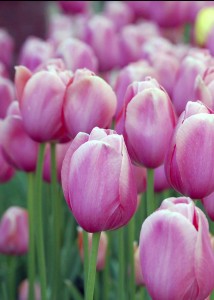
These bulbs need several cold winter months to produce good roots. If you plant too late, in January or February, the bulbs won’t have enough time to produce a strong root system.
Buy the largest bulbs — solid, plump, firm — you can find to get the best blooms. Skip the bulbs in the bargain basement bin, and also avoid ones with soft spots, blemishes or mold. Once purchased, try to plant the bulbs as soon as you can. Otherwise, store them loosely in paper bags in your refrigerator or a cool and dry place.
Make sure you plant the bulbs in a location with good drainage. Most bulbs can’t tolerate wet feet and will rot. Add organic matter (compost or aged manure) to clay soils to improve drainage. Most spring bulbs require at least 5-6 hours of sun. Avoid planting them under large trees, where they won’t get enough sunlight.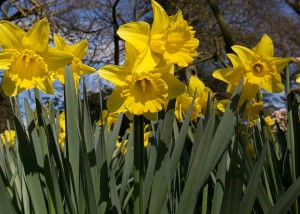
Plant according to the size of the bulb. Generally, this means digging a hole about two to three times as deep as the bulb is wide. For small bulbs such as crocuses and snowdrops, dig a hole about 4-6 inches deep. Meanwhile, larger bulbs such as tulips, hyacinths and daffodils will need to be planted about 8 inches deep. Follow the directions on the package if available.
Mix good fertilizer (10-10-10 or bulb fertilizer) into the hole when you plant. A bit of bonemeal or blood meal, which are high in phosphorous, will also help the bulb develop good roots. Fertilize again in the spring when the shoots break through the ground, but don’t fertilize once they have started flowering. After the bulbs are in the ground, soak with water to allow the soil to settle.
Filed under: Seattle Landscape Maintenance | Permalink | No Comments
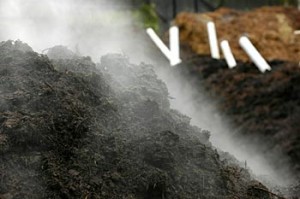 In March, we wrote that the
In March, we wrote that the 
 Fall is the perfect time of year to plant trees, shrubs, perennials and ornamental grasses in the Pacific Northwest. Soils are warm — not too wet or too dry. Rains during this season help keep plants watered, requiring less of your attention. Plants also suffer less stress when you transplant them during the cooler autumn season.
Fall is the perfect time of year to plant trees, shrubs, perennials and ornamental grasses in the Pacific Northwest. Soils are warm — not too wet or too dry. Rains during this season help keep plants watered, requiring less of your attention. Plants also suffer less stress when you transplant them during the cooler autumn season. 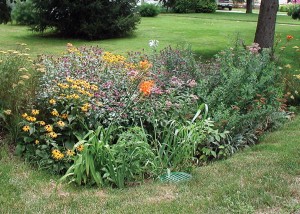 What are rain gardens? They’re simply shallow depressions in the soil landscaped with perennial flowers and native vegetation that soak up rainwater and slow the flow of runoff into our lakes, streams and other water bodies.
What are rain gardens? They’re simply shallow depressions in the soil landscaped with perennial flowers and native vegetation that soak up rainwater and slow the flow of runoff into our lakes, streams and other water bodies.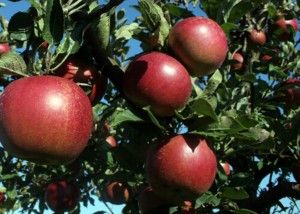 Every year, thousands of pounds of fruit fall to the ground and rot. Homeowners who grow apples, plums, cherries, pears or other fruit often find that they can’t keep up with their fruit harvest, and they can only give away so much of their bounty to neighbors and co-workers.
Every year, thousands of pounds of fruit fall to the ground and rot. Homeowners who grow apples, plums, cherries, pears or other fruit often find that they can’t keep up with their fruit harvest, and they can only give away so much of their bounty to neighbors and co-workers.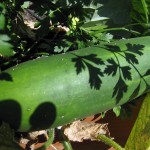
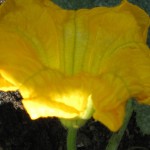 reason you’re not getting fruit set. No pumpkins, squash, ears of corn or tomatoes. What’s going on? A key problem is pollination. Your plant either hasn’t been pollinated at all, or has been insufficiently pollinated.
reason you’re not getting fruit set. No pumpkins, squash, ears of corn or tomatoes. What’s going on? A key problem is pollination. Your plant either hasn’t been pollinated at all, or has been insufficiently pollinated. There are a lot of great gardens to check out this Saturday at the
There are a lot of great gardens to check out this Saturday at the 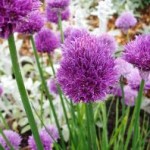 Learn about different kinds of cistern systems, how they work, and what cistern makes sense for you. Find out more about honey bees from an expert, and see an example of good “dogscaping,” landscaping that takes into account your dog’s paths and lifestyle.
Learn about different kinds of cistern systems, how they work, and what cistern makes sense for you. Find out more about honey bees from an expert, and see an example of good “dogscaping,” landscaping that takes into account your dog’s paths and lifestyle. new regulations are underway in the city of Seattle to tighten the rules around tree-cutting. The exact specifics haven’t been ironed out yet — like whether a permit is required to cut down a tree — but the Seattle City Council passed two measures earlier this month that provide some measure of protection for trees. (Both
new regulations are underway in the city of Seattle to tighten the rules around tree-cutting. The exact specifics haven’t been ironed out yet — like whether a permit is required to cut down a tree — but the Seattle City Council passed two measures earlier this month that provide some measure of protection for trees. (Both 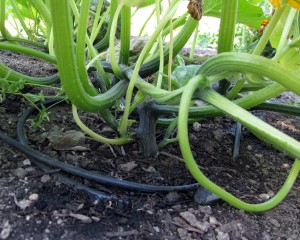 Drip irrigation systems are a must for the lazy gardener, which I clearly am. I set the automated timer and forget about it; the plants get watered in the early morning every few days like clockwork. It’s made a huge difference in how the vegetables in my garden have fared. The tomatoes and pumpkins (pictured to the right) that are in the part of the garden where I have established a drip system are doing great; the potatoes that aren’t on the drip system, however, are struggling this season because of my neglect.
Drip irrigation systems are a must for the lazy gardener, which I clearly am. I set the automated timer and forget about it; the plants get watered in the early morning every few days like clockwork. It’s made a huge difference in how the vegetables in my garden have fared. The tomatoes and pumpkins (pictured to the right) that are in the part of the garden where I have established a drip system are doing great; the potatoes that aren’t on the drip system, however, are struggling this season because of my neglect.


